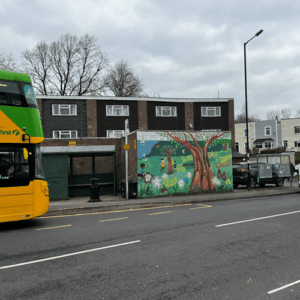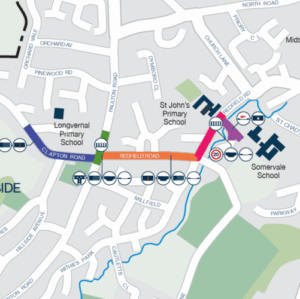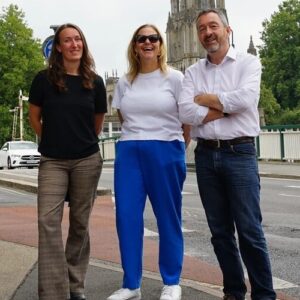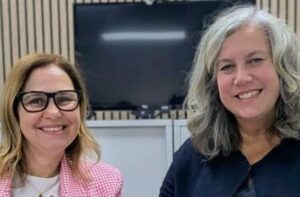
New transport hub planned for Pill
Plans for a new transport hub in Pill, North Somerset, are moving forward with works set to start early January...
Top line: Among 11–16 year olds in Wales, those who reported living with busy traffic and car parking were found to be less likely to have positive perceptions of the safety, friendliness, appearance, play facilities and helpfulness of the people in their local area.
Recent decades have seen a rapid rise in the number and length of motor vehicle journeys and a corresponding decline in the number of journeys by rail, bus and bicycle. While the threat to life from road traffic accidents1 and the risks to respiratory health from vehicle air pollution are widely recognised, the damaging effects on well-being of the increasing number of motor vehicles, accidents and emissions aside, is often overlooked. Research in this area is limited, but has found a negative effect of traffic speed and volume on social interaction and perceived street environment friendliness.2
Although there has been a large decrease over the last three decades in the number of child road fatalities, few people would regard the roads as safer now than three decades ago. Research suggests that the decrease may be due to the fact that increasingly fewer children and young people frequent public highways than ever before and that there are greater restrictions placed on their independent travel than ever before. It appears, therefore, that the visible, official problem of road deaths among children and young people is contributing to an invisible, unofficial problem of increased fear and worry, journeys foregone, restricted independent mobility, and reduced social and play activities outside of the home, school and playground.
Research conducted in Wales among 11-16 year olds examined the relationship between busy traffic and car parking in the area around where one lives and perceptions of the safety and sociability of that area among young people.3 Results show that those reporting more traffic and/or car parking on their local streets were less likely to view their local area as a good place in which to grow up; as a safe place generally, a safe place to walk alone in after dark, or a safe place for children to play in outside; as a place where they could ask for help or a favour from neighbours, or where people say ‘hello’ and stop to talk to each other on the street; and as a place with good parks, playgrounds and play spaces. In addition, those reporting more traffic and/or car parking were more likely to describe the area as having a lot of litter on the streets and footpaths. This finding was independent of the effect of socio-economic circumstance – so whether poorer or wealthier more motor traffic impacted negatively on perceptions of the local environment.
The results indicate that young people growing up in less traffic and car filled areas ‘see’ or experience a somewhat nicer, more pleasant, more supportive and more likeable local environment than those who live with more traffic and cars. These results have implications for young people’s mental well-being, and potentially, for the well-being of a local area. They also suggest that attention to the design of living environments has much to contribute towards promoting health and well-being among young people.
1 See Essential Evidence No 75 regarding the term ‘accident’ www.bristol.gov.uk/tpevidencebase
2 Appleyard, D., Lintell, M. 1972 The environmental quality of city streets: the resident’s viewpoint. American Institute of Planners Journal, 38: 84-101.
3 Mullan, E. 2003 Do you think that your local area is a good place for young people to grow up? The effects of traffic and car parking on young people’s views, Health and Place, 9: 351-360
77: Is your local area a good place for young people to grow up? Download pdf PDF approximately 32.42 K
Plans for a new transport hub in Pill, North Somerset, are moving forward with works set to start early January...

New funding will improve walking routes in Midsomer Norton, helping children travel to school more safely.

Works to extend the popular m1 metrobus route and improve walking, wheeling and cycling infrastructure in the area are set...

The West of England Mayoral Combined Authority will receive more than £11.7 million in government funding to help them deliver...

Millions of passengers in the region are set to benefit from faster, cheaper and more reliable buses after the Government...